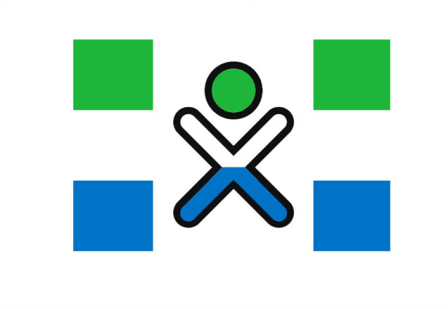Contributors program/Project proposal form: Difference between revisions
No edit summary |
m (Contributors program/Project proposal form moved to OLPC Tanzania) |
(No difference)
| |
Revision as of 22:22, 11 April 2009
About OLPC Tanzania
OLPC Tanzania is an innovative approach to XO deployment which focuses on peer tutoring and a bottom-up distribution model. The pilot project is based in Dar es Salaam, Moshi, and Kibosho on HIV Diagnostics for Children. Practical HIV diagnostics are urgently needed in resource-limited settings like Tanzania. While HIV infection can be diagnosed using simple, rapid, lateral flow immunoassays, HIV disease staging and treatment monitoring require accurate counting of a particular white blood cell subset, the CD4(+) T lymphocyte. To address the limitations of current expensive, technically demanding and/or time-consuming approaches, we have developed a simple CD4 counting microfluidic device. This device uses cell affinity chromatography operated under differential shear flow to specifically isolate CD4(+) T lymphocytes with high efficiency directly from 10 microliters of unprocessed, unlabeled whole blood. CD4 counts determined in our device matched measurements by conventional flow cytometry among HIV-positive subjects over a wide range of absolute CD4 counts (R(2) = 0.93) during clinical trials at Massachusetts General Hospital. CD4 counts will be obtained under an optical microscope connected to OLPC XO Laptop in a rapid, simple and label-free fashion.
OLPC XO HIV Diagnostics
The pilot program will distribute 30 educational laptops to local healthcare providers across Tanzania. For this project we are collaborating with Kiwakkuki, a non-governmental organization in Tanzania that was created in 1990 to raise awareness of HIV/AIDS in the Kilimanjaro region of Tanzania. Kiwakkuki was founded to empower women and children in the region to access infomation about the causes and consequences of HIV/AIDS and to assist their communities in combating HIV/AIDS with education, counseling, emotional support and medical care. Today, Kiwakkuki works to improve awareness of HIV/AIDS with free testing, mobile healthcare workers, counseling, orphan support, home-based care, and community education. Kiwakkuki staff will be trained on the XOs and the CD4 device to conduct HIV diagnostics, and they will subsequently train local clinicians at villages in Tanzania. We believe that this CD4 microfludic device with XO imaging can be used for simple, rapid and affordable CD4 counting in point-of-care and resource-limited settings like Dar es Salaam Tanzania, the site of our pilot program.
Community
More than 35 million HIV-infected people most of which are women and children live in the developing world, yet it is estimated that only one in ten persons infected with HIV has been tested and knows his/her HIV status. The United Republic of Tanzania, located in Southeastern Africa, on the coast of the Indian Ocean is home to a population of 38,329,000 . Per capita income is estimated to be at about $350 a year, thus Tanzania is considered one of the poorest countries in the world. HIV infection has reached epidemic proportions in Tanzania, and the country is currently one of the most affected countries of the sub Saharan African region with an estimated 1.3 million adults and children living with HIV/AIDS. Effective antiretroviral therapy (ART) for HIV has been available in Tanzania for more than a decade. However, it is estimated that less than 20% of all the infected individuals in Tanzania are currently receiving treatment, the most affected persons are living in rural and hard to reach communities. A significant problem associated with existing ART delivery systems in Tanzania are the limitations of conventional methods to diagnose and monitor infected individuals living in rural poor communities. In order to increase access to HIV care and improve treatment outcomes, there is an urgent need for low-cost diagnostic tools that could be implemented in remote rural settings. Determining the absolute number of CD4+ T lymphocytes in blood is vital for evaluating HIV-infected patients and has important prognostic and therapeutic implications. The CD4 count is used to initiate treatment and to monitor the response to treatment. Guidelines recommend that patients be monitored routinely for CD4 counts. Currently CD4 counts rely on flow cytometry technologies. Available flow cytometers cost from $30,000 to $150,000, and a single CD4 count can cost upwards of $50 per result. While lower prices are available in some resource-limited countries, the cost remains unaffordable for many patients, and the test must be performed at a central laboratory. Given the widespread lack of viral load testing, Tanzania Ministry of Health has required that changes in CD4 counts be used as the primary means to monitor patient responses to ART. The standard laboratory equipment and kits used for CD4 cell counting have limited penetration in Tanzania, however, despite ongoing international efforts to extend ART in these areas. A severe shortage of trained laboratory technicians across Tanzania has been the major barrier. Flow cytometers, including smaller single-purpose CD4 cell counting devices developed recently, require extensively trained laboratory technicians to handle and process samples and to analyze and report data. Because flow cytometry-based CD4 cell counting is beyond the reach of so many HIV-infected people especially at the secondary (village clinics) and tertiary (Home-based care) health care levels in Tanzania, XO HIV Diagnostics that will make possible the staging and monitoring of HIV-infected patients especially women and children in resource-limited settings (small towns and villages) in Tanzania. This, in turn will allow people access to CD4 counts and ARTs at the primary, secondary, and tertiary levels of the healthcare system in Tanzania.

